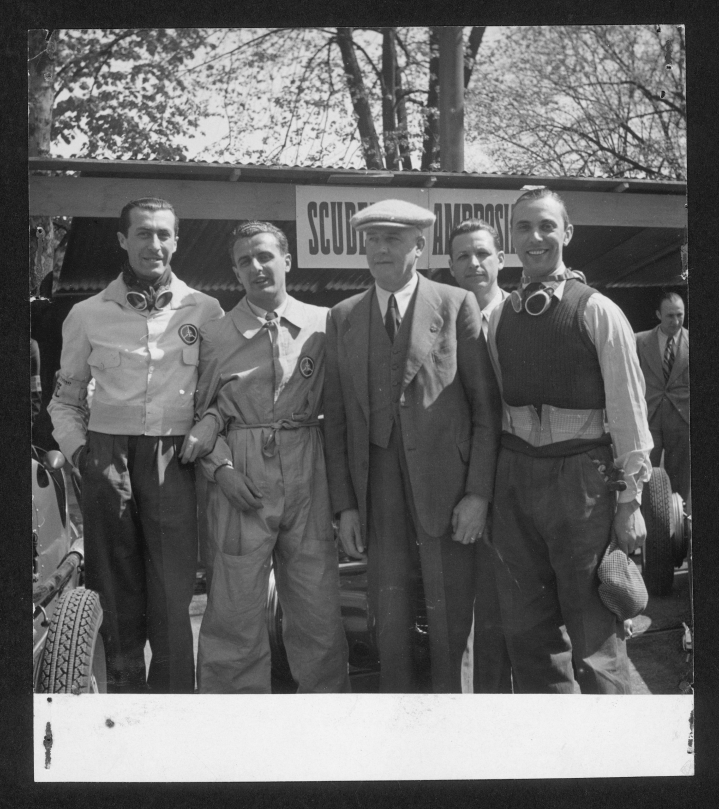Our
history
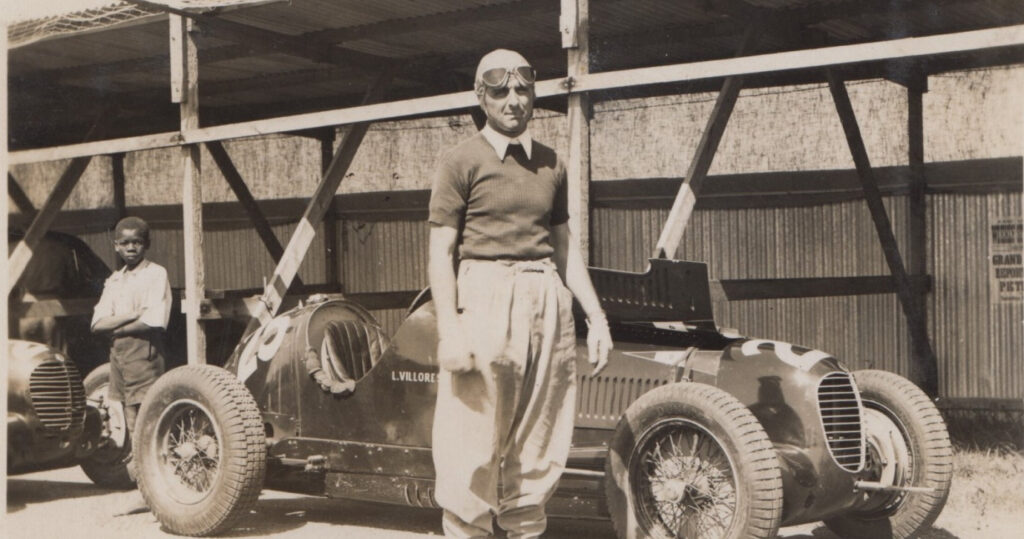
A journey that
begins in 1936
On December 3rd 1936 Scuderia Ambrosiana was founded by Giovanni Lurani, Luigi Villoresi, Franco Cortese, and Eugenio Minetti. Four founders, four “gentlemen drivers”, but , above all, four friends united by their great common passion for speed.
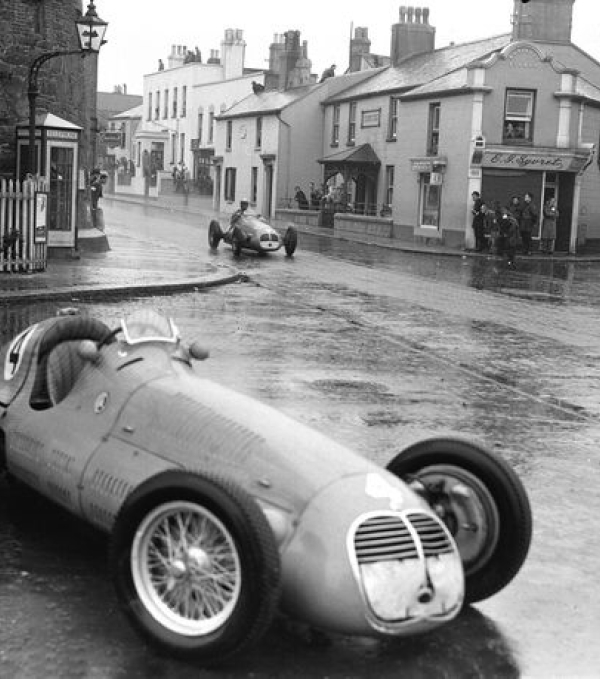
Their love for four wheels, which had already driven them to invest in this field, culminated in the idea of founding a racing team based in Milan. Establishing a racing team capable of competing internationally in prestigious races was the realisation of a longstanding dream.
However, the project had to be singularly different from existing contemporary rivals. It needed to distinguish itself from the companies operating in the automotive world, while simultaneously sharing the same goals.
In Italy, the quintessential racing team was Ferrari. Established in 1929, it very soon became a player on the sports scene. There were many projects that flattered Ferrari by imitation, whose symbol was the now iconic Prancing Horse, but they were short lived ventures, unable to sustain themselves economically, arguably because unlike the Maranello company they did not enjoy the support of a large, modern, and innovative automotive company like Alfa Romeo.
In light of the spectre of becoming yet another sporting and financial endeavour, doomed to failure, it was fundamental that Scuderia Ambrosiana was seen as something that stood out from other competitors in this field. To this end the founders adapted a strategy in which the characteristics of cooperation and flexibility were deemed to be instrumental if they were to succeed.
The basic concept was to create an organisation that left each member solely responsible for with the entirety of their respective burdens, independent of others needs and irrespective of results. For their part the racing stable would work on greater number of participants in races through increased revenues, more attractive salaries and a reduction in organisational expenses, technical assistance, etc… In this way, each driver raced with their own car, and they were responsible for the expenses related to spare parts, refuelling, travel, and transfers. The key motivation for a driver to become a member of the organisation was essentially fiscal, tied to the earnings that the team managed to reserve for them. It bears emphasising that the salary that the “SA” offered to its driver was significantly higher than what they could have obtained as an independent. In addition to this, the member could use the company headquarters to park the cars with their accessories and possibly carry out tuning in the same venue.
Skilful management and implementation of these premises were among factors which resulted in Scuderia Ambrosiana becoming a reality. The choice of President was Ferdinando Pozzani, a successful entrepreneur, a great sportsman and already the president of Ambrosiana Inter, who were later to become the current Inter Milan Football Club. The colours black and blue were chosen for the racing stable, at a stroke aligning themselves with the football club, and the ready association and increased visibility that comes with an established insignia.
The First Victories

Scuderia Ambrosiana Competing in the “Grand Prix” category, the premier class of motorsport at the time, and the forerunner of Today’s Formula 1 , was not considered to be an immediate goal .
Testing the waters by competing in minor championships, in the 1100 cc and 1500 cc categories rather than the ‘big class’( the grand Prix Category),was decided on as a potentially more attractive proposition given the dominance of the German teams and Ferrari , who would have presented a far stiffer challenge, especially for a rookie team like The Scuderia Ambrosiana.
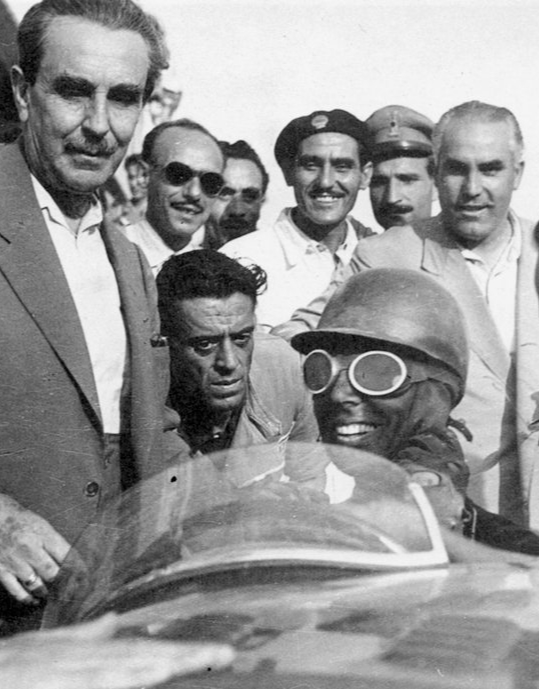
The first race to be contested was the Mille Miglia in 1937. The “SA” competed in four different categories. A Maserati, an Alfa Romeo, and two Fiats were the cars that started the race. Unfortunately, the race did not go as hoped, partly due to the misfortune that forced the two drivers (Lurani and Villoresi) driving the Maserati to retire due to technical problems.
Undeterred, the racing stable put the result of The Mille Miglia behind them and looked towards the numerous commitments that awaited. In the following months, the performances were much more encouraging, and on May 2, 1937, the first significant victory arrived. Giovanni Lurani triumphed with an Alfa Romeo at the Agro Pontino circuit, in a race that saw 82 cars at the start!
The success achieved on the new Italian circuit was just the beginning of important results obtained that year. Among the most relevant was the Targa Florio, which at the time was already one of the most prestigious races in the world.The Scuderia Ambrosiana took part in the race in Sicily for three consecutive years, coming in second place in 1937 with Lurani at the wheel and second in 1939, on this occasion with Taruffi driving.
At the same time, Giovanni Lurani was also preparing to break speed records on the road. On his own initiative, the “Nibbio” was built, an extremely lightweight car equipped with an engine with a displacement of 500 cc, built to be as fast as the wind. Lurani, aboard this special car, broke the land speed record by driving over 100 miles per hour (160 km/h) on the Florence-Mare motorway, a remarkable result for the time.
The numerous milestones achieved during these early years of activity clearly demonstrated that Scuderia Ambrosiana was a winning idea. The organisation behind it began to make a name for itself in the motorsport scene, becoming increasingly attractive to drivers. Even from an economic point of view, which was one of the cornerstones of the company, it proved to be a good deal. The “SA” enjoyed excellent financial health until 1940 when Italy also joined World War II. As an obvious consequence, during the war period, sporting activities ceased.
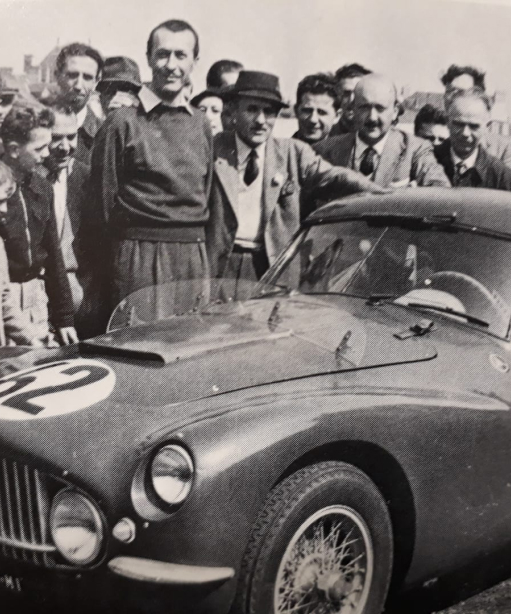
Post-War Era and Entry into Formula 1
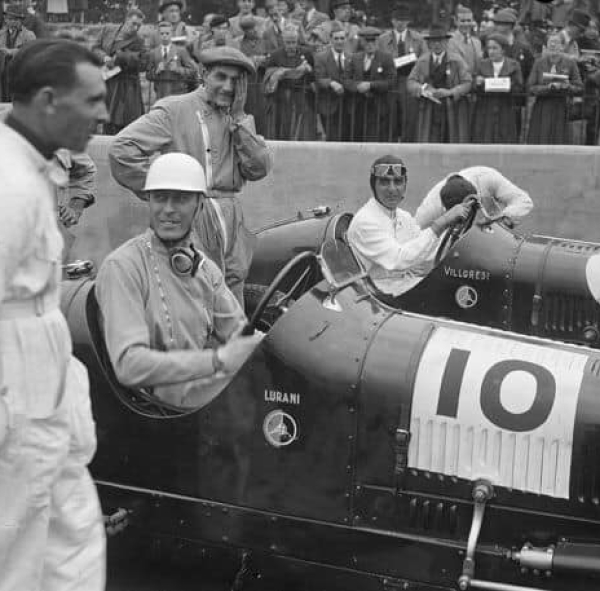
After the war, in the midst of the “Reconstruction” period, sporting events slowly resumed. Scuderia Ambrosiana prepared for a return to the track. 1947 was a busy year. The “SA” took part in numerous races, most of them with Luigi Villoresi and a future great champion Alberto Ascari. In addition to these notable luminaries Nino Farina, Reg Parnell, and even the legendary Tazio Nuvolari raced for the Scuderia. 1950 marked a significant turning point in Motorsport. The Fédération Internationale de l’Automobile (FIA) established the Formula 1 World Championship. It was the first Grand Prix organisation to take on an international character and over the years became the premier competition in motorsport.
Scuderia Ambrosiana boasts participation in 7 F1 Grand Prix, held in 1950, 1951, and 1954. David Murray, David Hampshire, and Reg Parnell were behind the wheels of the single-seaters. Meanwhile, participation in the legendary Targa Florio was confirmed, and in 1951, Franco Cortese crossed the finish line in first place. It was undoubtedly the most important victory of that period and perhaps even the entire history of the racing stable.
From 1955, after the Grand Prix experience ended, competitions continued until the 1960s. Scuderia Ambrosiana continued its participation in the Mille Miglia, Targa Florio, Endurance races, and even hill climb races. In this new phase, Corrado Manfredini and the Leto di Priolo brothers, Massimo, Carlo, and Dore, were the leading drivers of the Milanese team.
These were the last races. Victories in hill climbs and participation in the 1962 Sebring 12 Hours represented its final achievements before completely ceasing competitive activities.
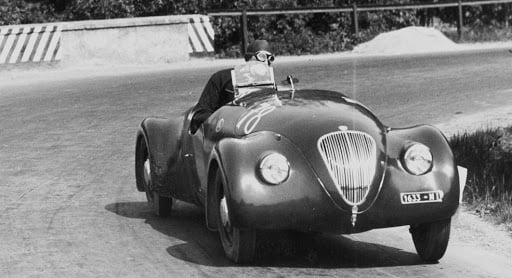
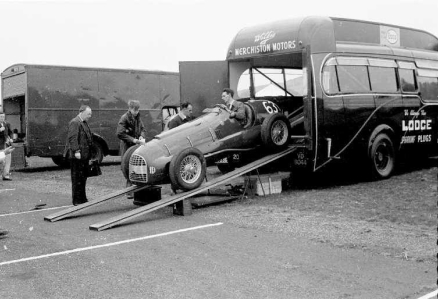
The Rebirth in 1992
The Scuderia returned to prominence in 1992, thanks to the work of Giovanni Iachino, Massimo Leto di Priolo, and a group of Milanese car enthusiasts. The purpose of the revival was to use historic racing cars, which had been carefully preserved in the garages of the Scuderia’s members, for the new regular competitions being organised, namely, The Mille Miglia, The Trofeo Nuvolari, The Coppa delle Alpi, and The Coppa d’oro delle Dolomiti. Over the years the races have increased significantly in number and the participation of members continues to be active.
Currently, Scuderia Ambrosiana is a sports association of friends that is responsible for creating a common service for car gatherings and for carrying out all the bureaucratic operations necessary to keep these cars in use.
Looking to the future, the goal is to bring together a racing team under the historic SA insignia to compete in speed and regular races reserved for vintage vehicles.
